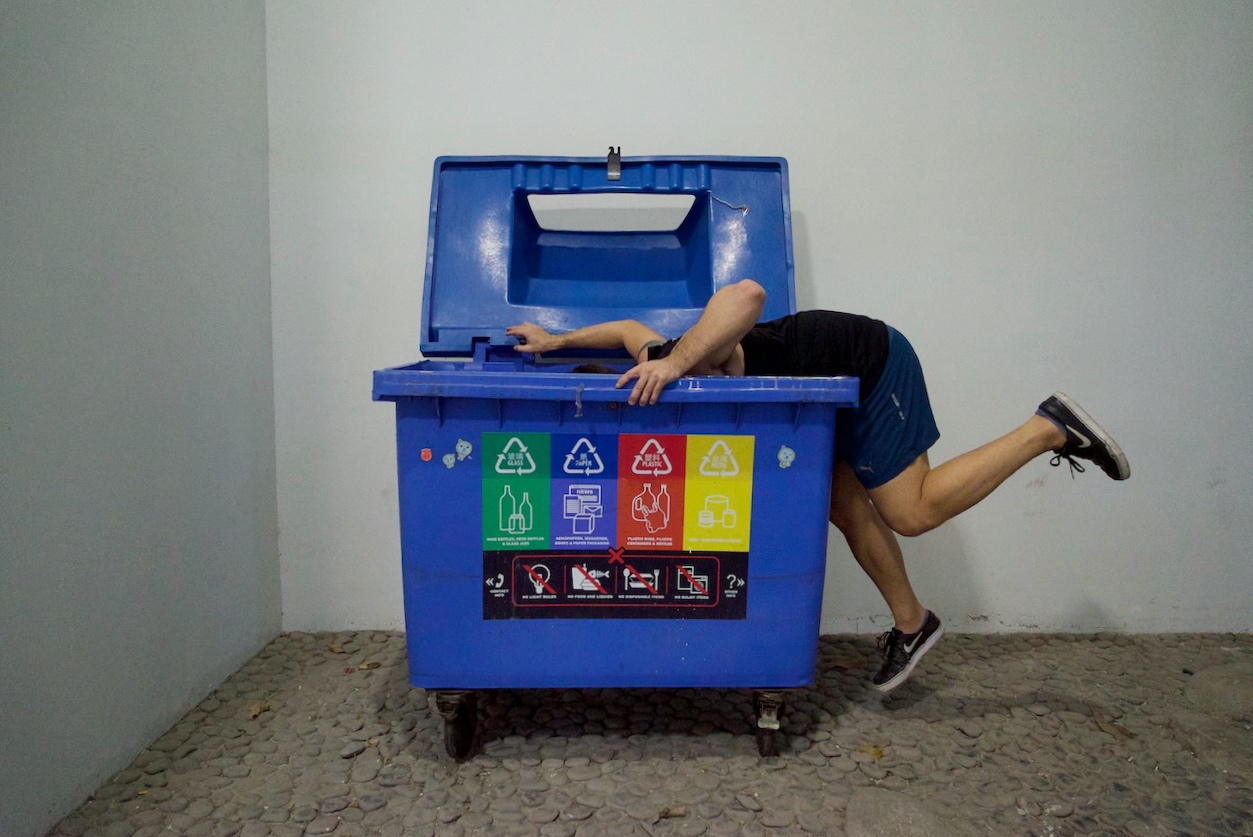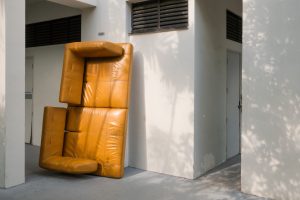Yet many of us didn’t even realise it at the time. You see, it wasn’t the erection of another orgy of steel and concrete which altered the aesthetic of our island. Oh no, it was something far more subtle than that.
As Singapore entered the new millennium, blue recycling bins started rolling out to every housing estate in accordance with the National Environment Agency (NEA) ‘s nation-wide recycling programme. With an aim to both manage and reduce waste, the NEA initially designated one bin to every five residential blocks.
Seventeen years later, that ratio is vastly different. No matter which way you look in Singapore, a blue bin can almost always be seen as the country continues its effort to go uh, green.
But despite the prevalence of bins, I’ve always had my reservations. Do the bins even work? Are we even recycling the right things?
Armed with nothing but a camera and a flagrant disregard for the possible $5000 fine imposed on anyone caught tampering with the county’s recycling endeavours, I dove into ten of them to find out.
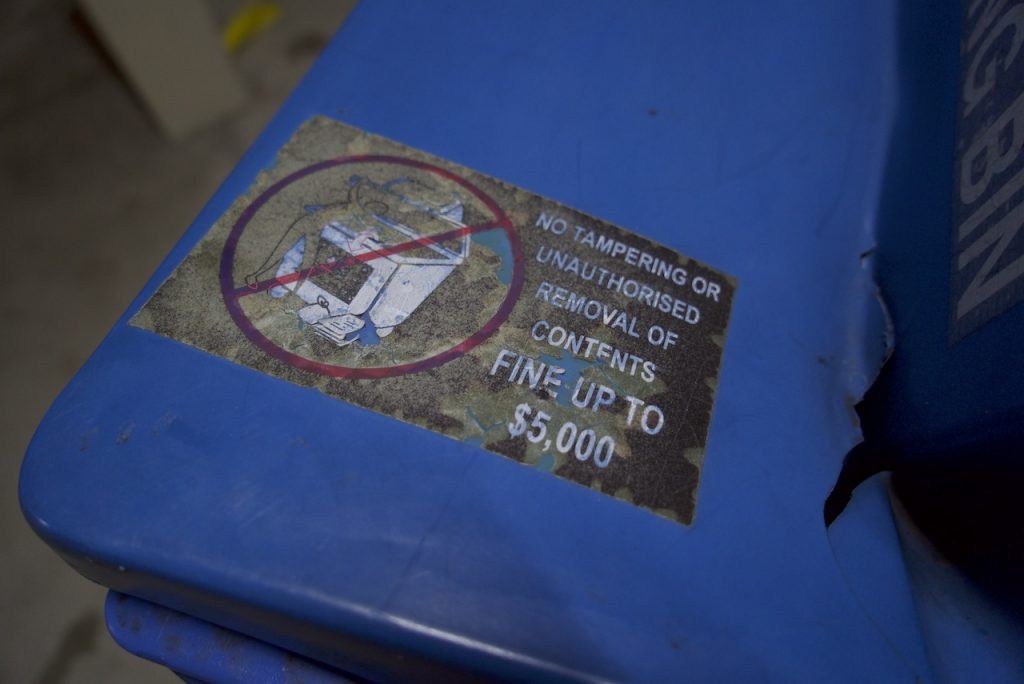
I begin my trash-venture in the housing estate of Punggol.
Home to many newly-weds and young families, I figured it must be the place for getting a sense of the recycling habits of Singapore’s younger households. Also, because the average age of Punggol’s residents is generally lower than other estates, there might’ve been a chance of gaining insight into the future of the country’s waste management as well.
With a mix of nervous excitement and genuine fear, I gingerly open the lid of the blue recycling bin standing sentinel under block 188. As it turns out, I needn’t have worried.
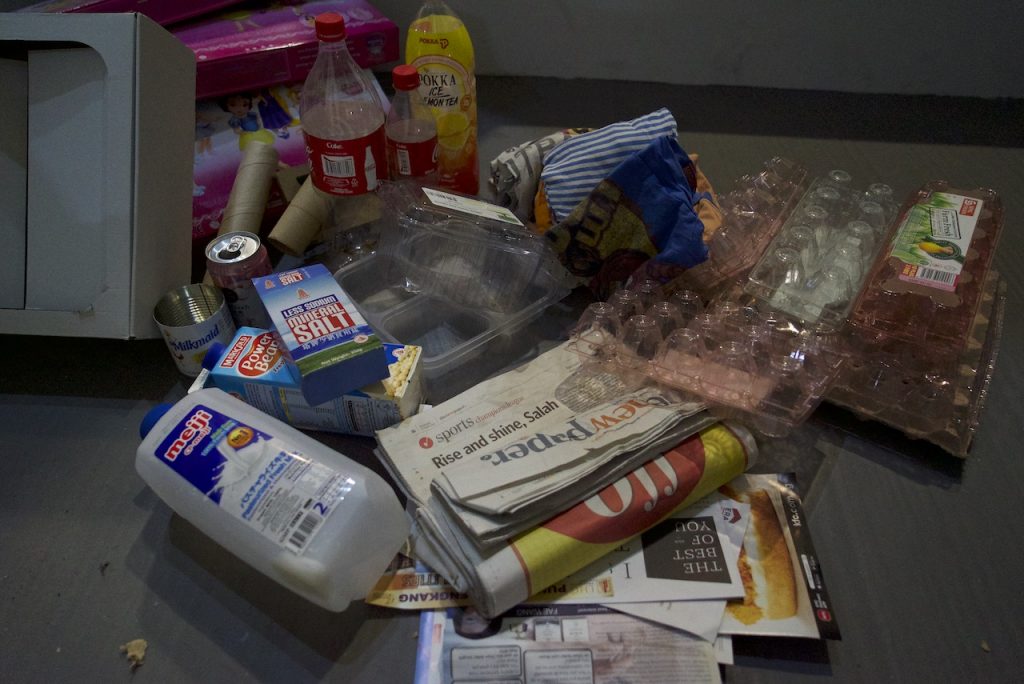
Brightly-coloured toy cardboard boxes make up the bulk of the recyclables alongside many smaller plastic bags. Poking around, I find that they’re mostly full of newspapers, flyers and old tee shirts which have been all neatly folded and packed separately.
The bin is also home to old food and beverage containers, but unlike those you find in the garbage, these ones have been thoroughly cleaned and dried. It explains why the bin doesn’t smell and no pests can be seen scuttling around (thank god) when I sift through the bin’s contents.

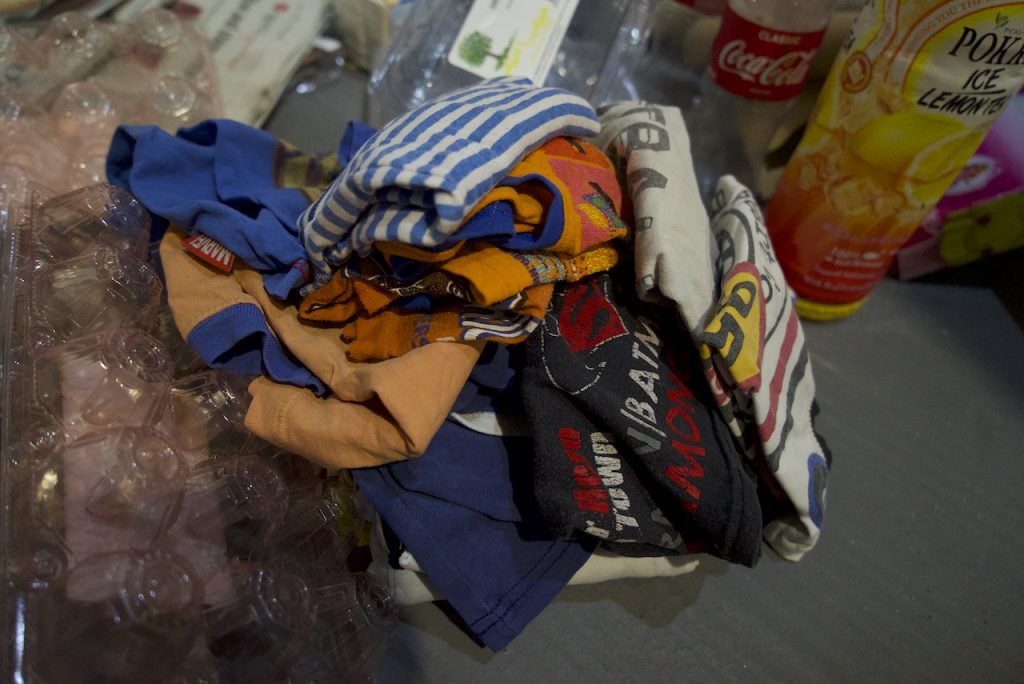
While the second bin I check out is largely similar to the first, there are a few small differences.
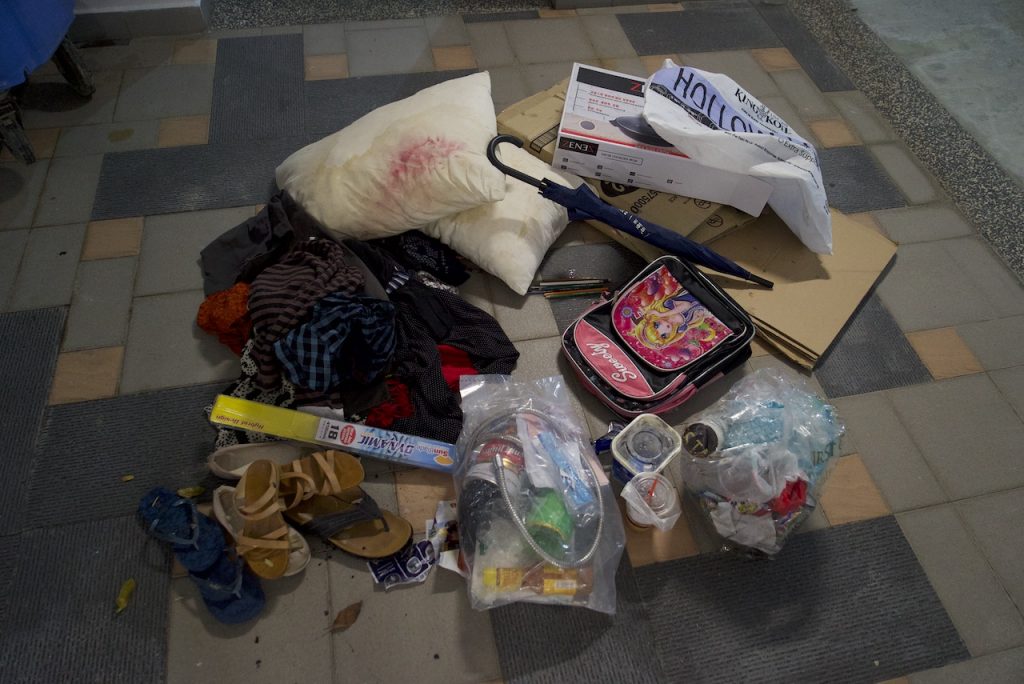
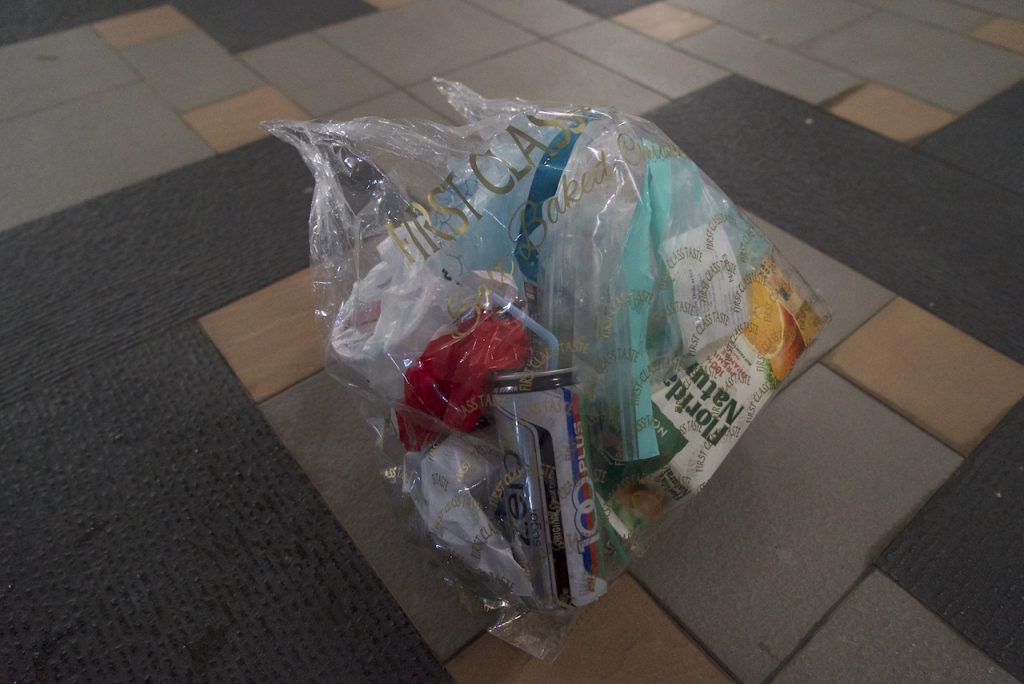
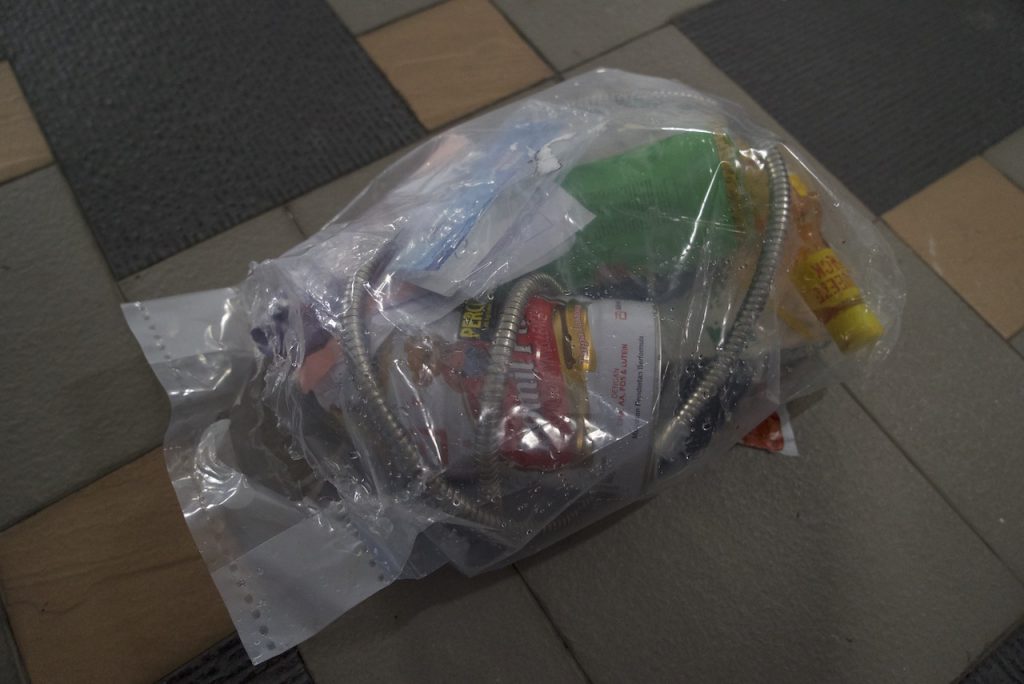
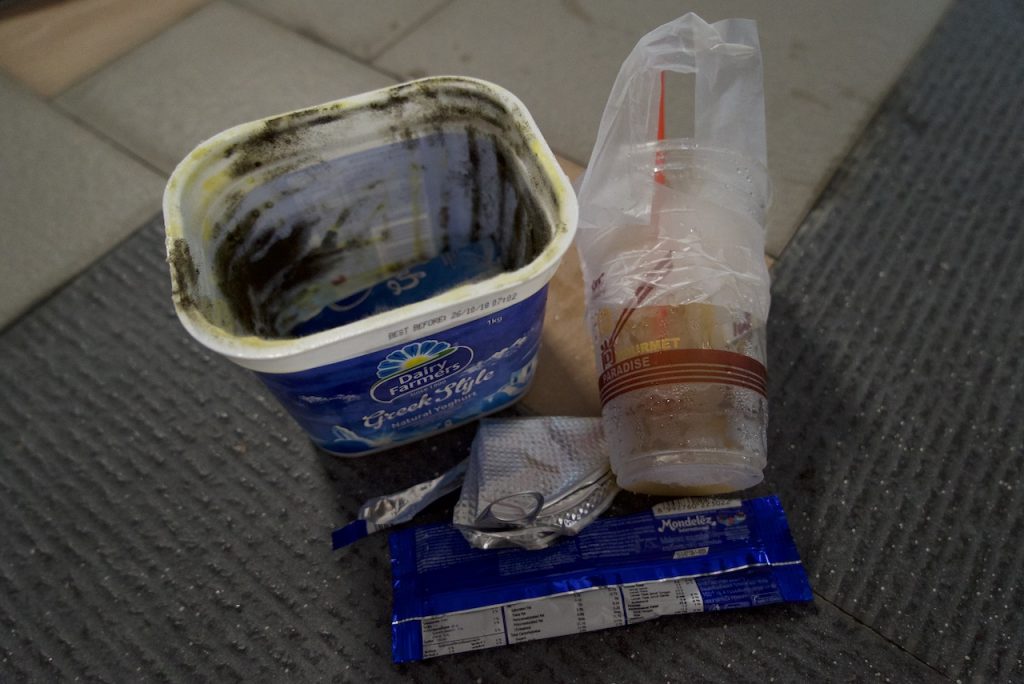
Coming up against the relative youthfulness of Punggol’s resident population is Rochor.
According to the department of statistics, the district is one of only five planning areas in which those aged 65 years and over make up over 20% of residents.
Unfortunately, the old adage on how wisdom comes with age doesn’t apply this evening. Approaching the bins in the area, I immediately start wishing I had brought gloves.
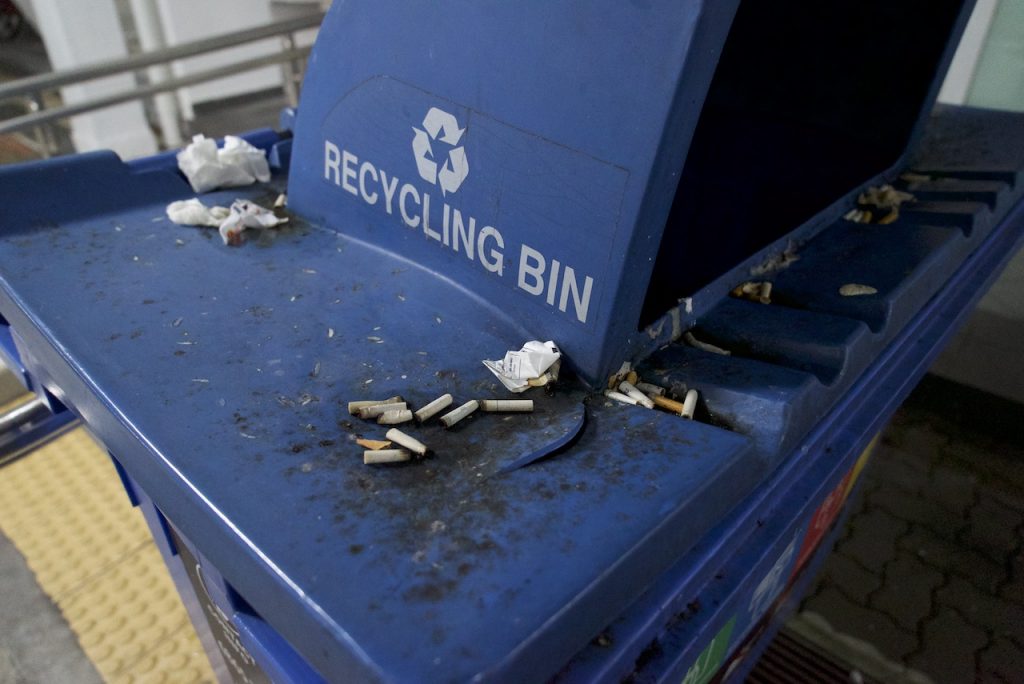
Half-filled beer bottles and plastic cups have created a soggy, disgusting mess that reeks of stale smoke. Frankly, it’s a pity because I can spot one or two bags that appear to have been dropped in with good intentions.

Instead, I find this.

Upon closer inspection, my naivety disappears. Fast. The bin is the highest order of gross and wave upon wave of regret crashes down on me as again I chide myself for not bringing gloves.
Cautiously nudging the garbage around with a finger, I realise that there’s almost nothing that’s close to being recyclable in the heap of trash. From rotting food waste to a soiled diaper, if you can name it, it’s somewhere in here.
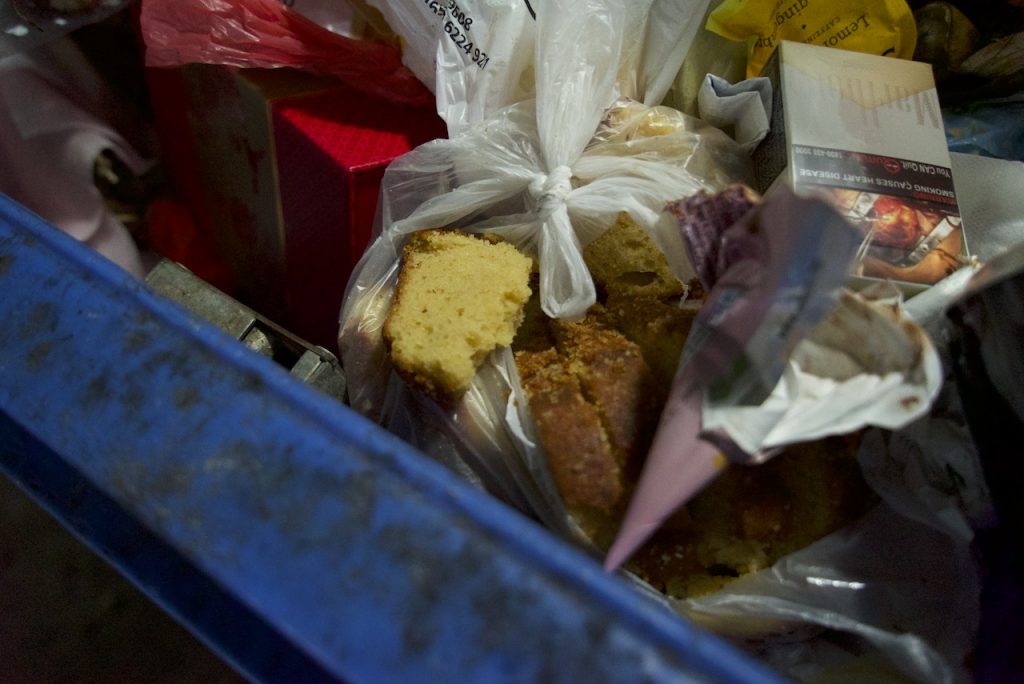


After fleeing the horrors of Rochor’s recycling bins, I arrive at the nearby Pinnacle @ Duxton twenty minutes later.
This is no coincidence. I mean, the place and its occupants have always been sort of a mystery to me. Why would anyone pay such an exorbitant sum for a small HDB flat that looks and feels exactly like a condo?
With that burning question in mind, I sift through one of the block’s recycling bin (parked near an electric car charging point no less) for clues as to the kind of people that lived there.

There’s really not much in the bins save for empty liquor bottles, the cardboard packaging of wine glasses and a Victoria’s Secret bag of uh, plastic bags. Oh and not forgetting an empty bottle of Evian mineral water.
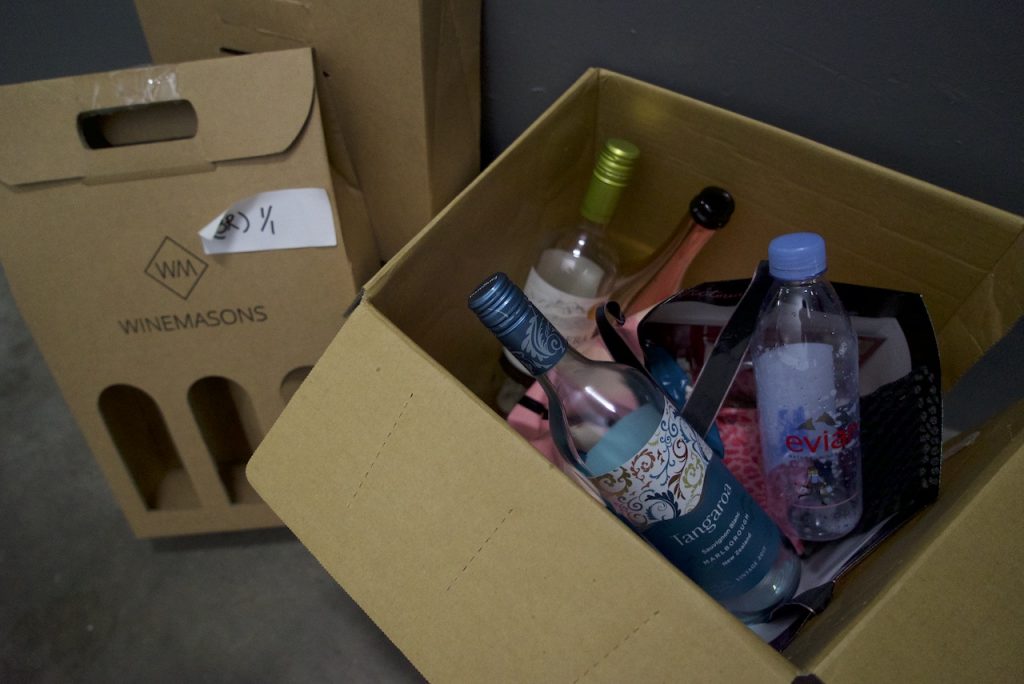
However, no matter who the residents appear to be, the data once again means nothing without an exploration of the other end of the spectrum. Not all neighbourhoods are created equal, and it was time to check out the most heartland of all heartlands.
It’s close to midnight when I reach Toa Payoh. Though the streets are empty, they are nowhere near devoid of life.
As I explore Lorong 2 in search of blue bins, out of the corner of my eye I see huge rats darting around in the shadows. The sight immediately puts me on my guard. I was here to learn about the recycling habits of the estate, not become patient zero in bubonic plague 2.0.
A greater regard for my safety now considered, I decide to check out the larger recycling bins which in my mind, offer more comprehensive protection from the vermin since they’re harder to open.

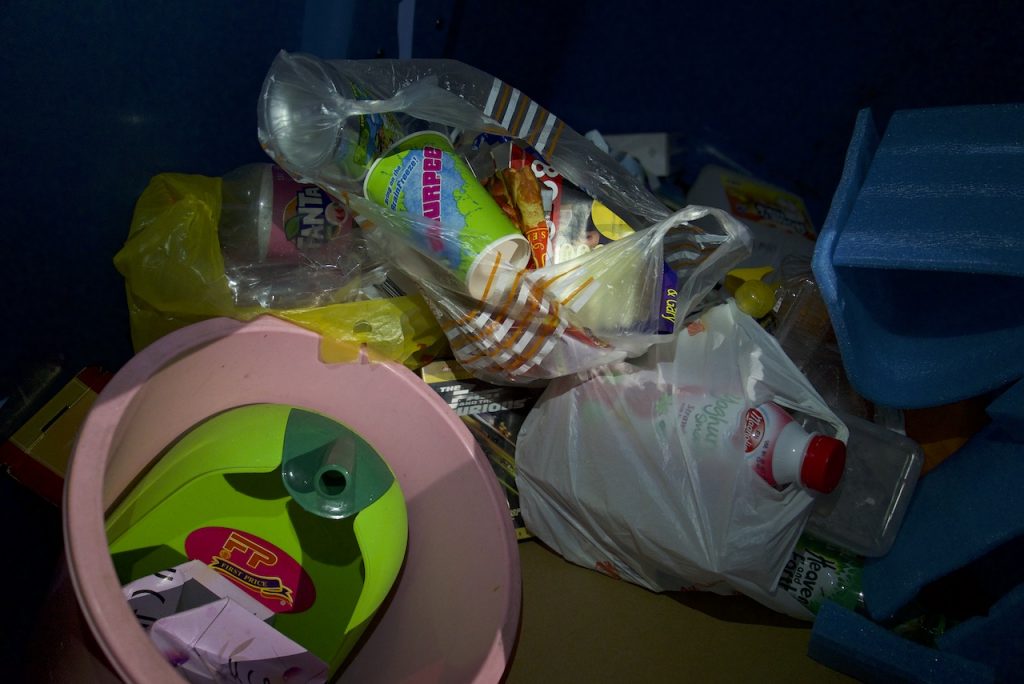
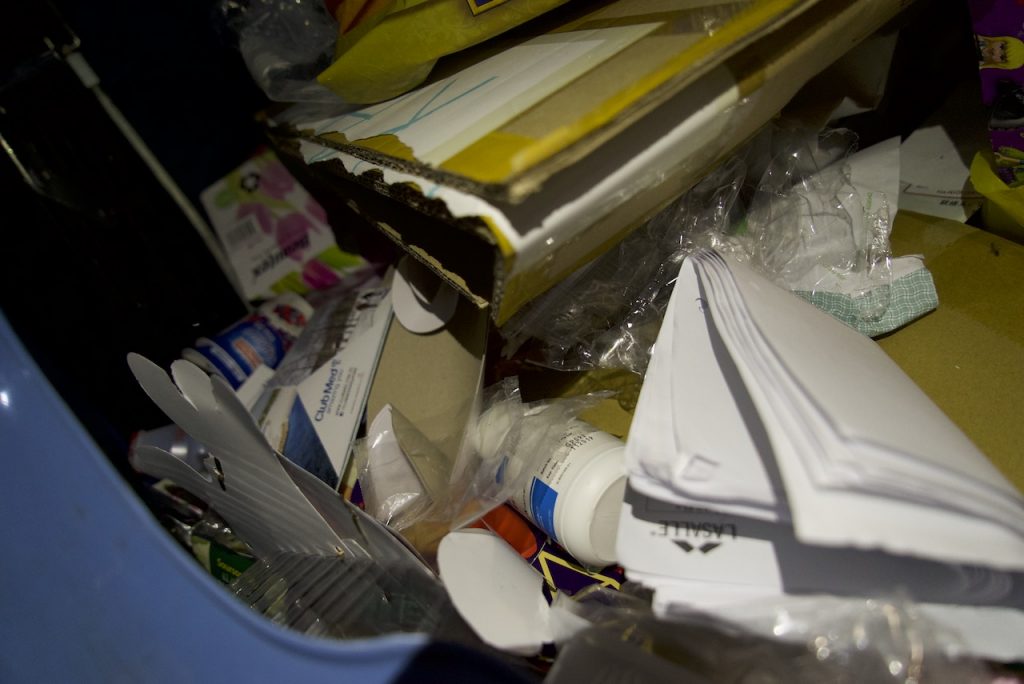
With my guerrilla research all but complete, I decide that I have time to explore one last estate for the night. And if I hadn’t been in any danger previously, I very well might be now.
Yishun, the land of murderers, drug syndicates, and your general all-around crazies.
As soon as I set foot in the estate, a genuine feeling of fear grips me as I wonder what I could possibly find in the recycling bins.
Severed limbs? Battered cats?
Well, no. Barring a welcome mat with a strange burn right through the middle, the items I find are again, more or less your everyday plastic waste. Nothing’s properly bagged so it’s pretty messy, but it’s not american-psycho-meets-the-shining messy either.
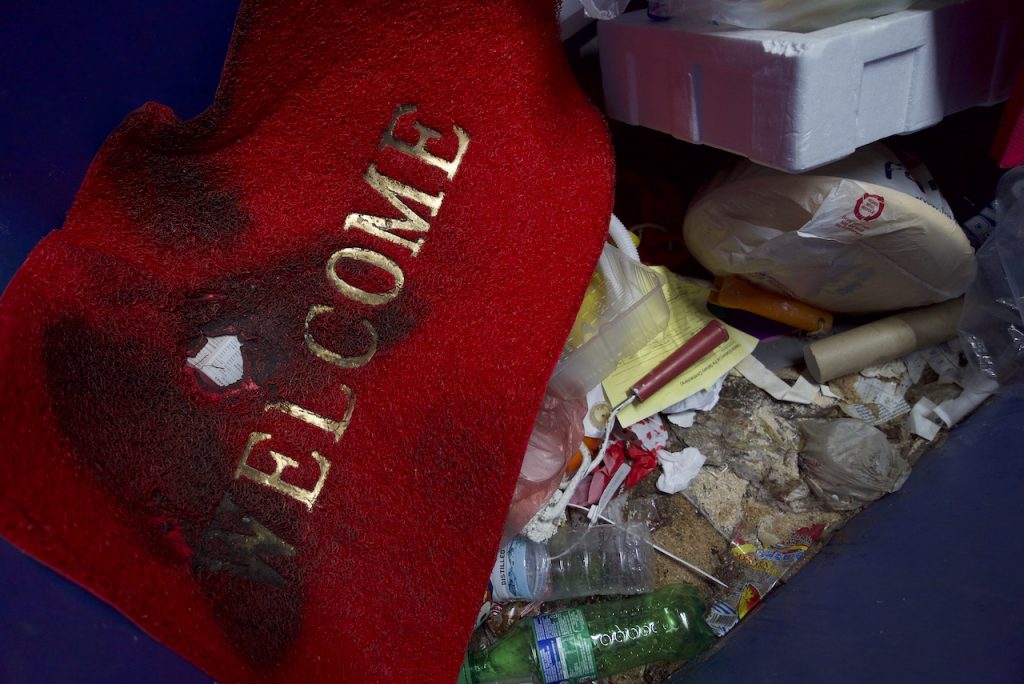
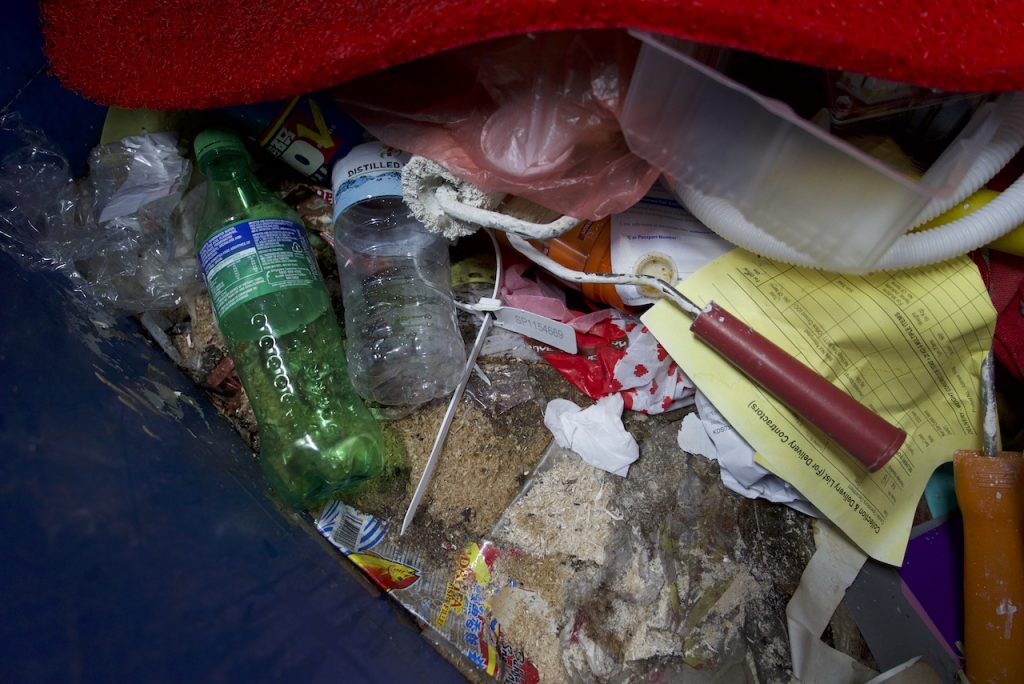
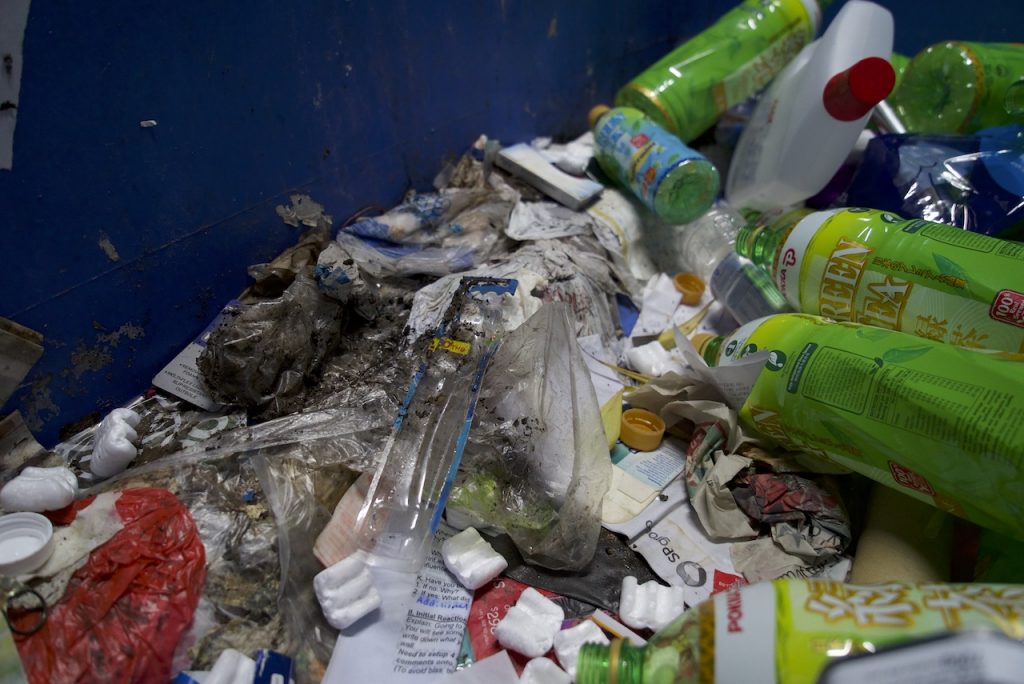

Based on my findings, a few things are pretty obvious.
For one, it’s clear the recycling bins have significantly reduced litter in our neighbourhoods. Even though they might not be used for their intended purpose, our little island is much cleaner than before. Instead of cigarette butts and empty takeaway cups being tossed in the bushes or on the floor, Singaporeans at least make the effort to find the nearest bin – even if it’s one meant for recycling.
That said, we still have a long way to go in terms of what and how we recycle. Most of the bins I rummaged through were a mess and filled with inappropriate objects. So even though we’re headed in the right direction when it comes to waste management efforts, perhaps we still need to take that extra step to enable us to really live up to our potential as a clean and green Singapore.
Unlike recycling powerhouses such as Germany and Austria, Singaporeans aren’t required to separate our plastic, paper, glass and metal waste before throwing them in our blue recycling bins. Bearing that in mind, what then is walking a few extra metres to dispose of rubbish in the correct bins, or going the extra mile and cleaning our recyclables before donating them?
Pledge your commitment to #RecycleMoreWasteLess here.

